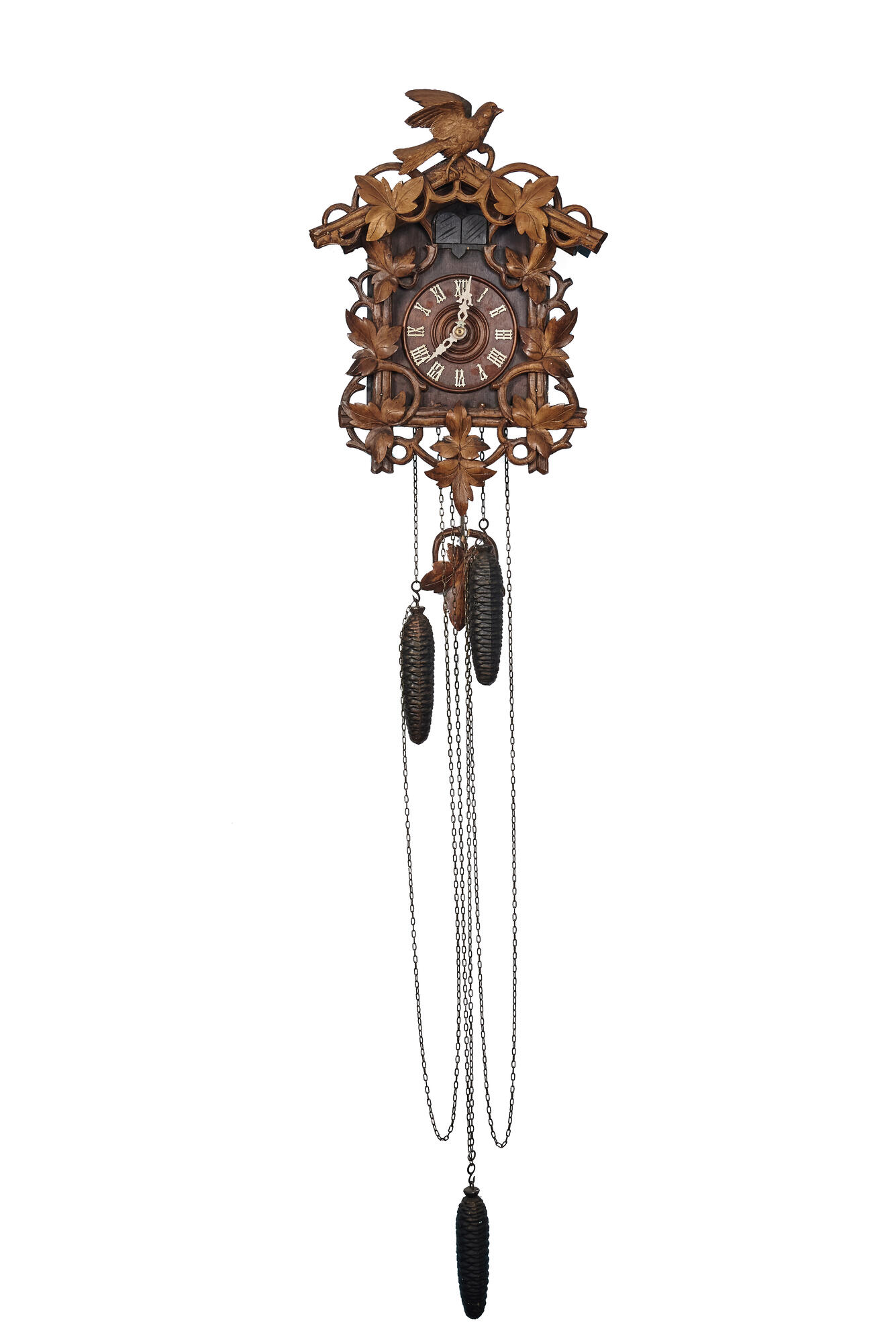Cuckoo clocks have a long history. The first mentions of clocks that were decorated with moving figures of animals and birds date back to the 16th century. This mechanism was described in 1650 by Atanasius Kircher, a German scientist, inventor and polymath known for his various treatises about the world. However, 1738 is considered the official date of the invention of the famous clock. One of the first copies was created by the German clockmaker Franz Ketterer from the Black Forest. Today this region is considered the world center of cuckoo clock industry.
Historians suggest that the clockmaker was inspired by the large tower clock with a crowing rooster, which was very popular in the 17th century. During that period, the presence of the ‘singing’ bird was dictated by the necessities of life. As night fell, homes were plunged into darkness, and the hands of the clock alone were not enough to tell the time.
The church organ was another source of inspiration for Ketterer. In order to create a voice for the cuckoo, the watchmaker adopted the mechanics of this very instrument. The sound in the clock was produced by the movement of air through special whistles — bellows. This technology has barely changed over time and is still used to this day with minor refinements.
The bird figurine in the clock from the museum collection can tilt forward and backward and open its beak, and its tongue can move. The movement is set in motion by pinecone-shaped weights. A small window with a door is located above the clock face, and when it is opened, birds appear — a quail for the quarter, a cuckoo for the hour.
The clock case resembles a stylized wooden hut with a gable roof. Curiously enough, this kind of fairy-tale hut, adorned with leaves, cones and other decorative elements associated with the forest, did not appear until the mid-19th century. The first models were more simplistic, and most often they looked like ordinary wooden boxes. Nevertheless, Ketterer’s invention gained popularity right away. By the mid-18th century German workshops that made cuckoo clocks became famous around the world. Today the chronicle of the cuckoo clock can be found in the small German town of Triberg (Black Forest), which has a museum dedicated to the clock and a production facility.
Historians suggest that the clockmaker was inspired by the large tower clock with a crowing rooster, which was very popular in the 17th century. During that period, the presence of the ‘singing’ bird was dictated by the necessities of life. As night fell, homes were plunged into darkness, and the hands of the clock alone were not enough to tell the time.
The church organ was another source of inspiration for Ketterer. In order to create a voice for the cuckoo, the watchmaker adopted the mechanics of this very instrument. The sound in the clock was produced by the movement of air through special whistles — bellows. This technology has barely changed over time and is still used to this day with minor refinements.
The bird figurine in the clock from the museum collection can tilt forward and backward and open its beak, and its tongue can move. The movement is set in motion by pinecone-shaped weights. A small window with a door is located above the clock face, and when it is opened, birds appear — a quail for the quarter, a cuckoo for the hour.
The clock case resembles a stylized wooden hut with a gable roof. Curiously enough, this kind of fairy-tale hut, adorned with leaves, cones and other decorative elements associated with the forest, did not appear until the mid-19th century. The first models were more simplistic, and most often they looked like ordinary wooden boxes. Nevertheless, Ketterer’s invention gained popularity right away. By the mid-18th century German workshops that made cuckoo clocks became famous around the world. Today the chronicle of the cuckoo clock can be found in the small German town of Triberg (Black Forest), which has a museum dedicated to the clock and a production facility.



